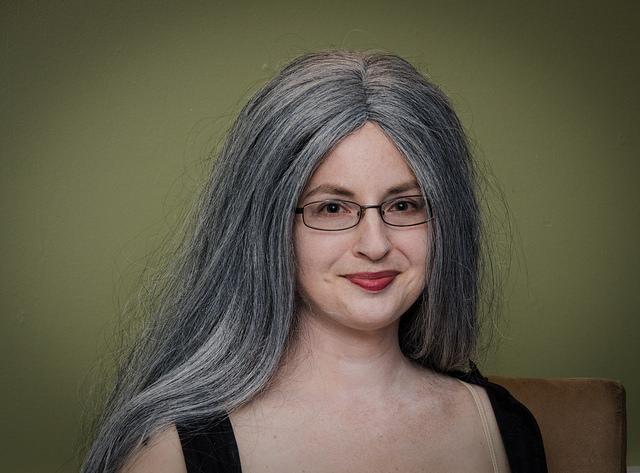This weekend in the Dutch city of Breda, redheads from 80 countries will gather for Redhead Days, now an annual congruence of natural redheads that started unintentionally in 2005 when an artist, looking for models for paintings of redheads inspired by the redhead paintings of Dante Gabriel Rossetti and Gustav Klimt, put an ad in the local newspaper.
From 150 gingers (he only needed 15), the festival has grown to more than 7,000 redheads of every hue, from strawberry blond to carrot red to copper to auburn. This weekend the international gingers will party, compare hair color, consult with hair and fashion experts, have their photos taken, and enjoy the exhibit called “Red Hot,” photographs of sexy red-haired men shot by British photographer Thomas Knight. (It’s in New York this week. Here’s a preview.)
I had my own redhead festival of sorts over the last six weeks, photographing redheads like Courtney Vincent, above, all over the Delaware Valley. You can see our Ginger Snaps here or below. (There’s text and more photos on our flickr site.)
Why such an interest in a hair color that occurs in just about two percent of the world population? Well, it’s just that. Red is rare. If you’re Irish or Scottish, you may find that hard to believe since there are more redheads in the Celtic population than most others. The statistics are conflicting and confusing, but in general about 12 percent of the Irish and 15 percent of Scots have red hair. By one estimate, as many as 80 percent of people carry the recessive gene for red hair, even if there are no redheads in their families. So that Internet rumor that circulates every few years that redheads are going to become extinct? Unlikely.
Redheads are like the original X-men—mutants. The hair color is caused by a series of mutations of the melanocortin 1 receptor (MC1R) gene, which acts as a switch between red and yellow pigments and black and brown pigment. (If you’re looking for yours, it’s on chromosome 16.) Because it’s a recessive gene, both parents need to carry it for you to have red hair.
But the trait isn’t limited to the Celts. Two of the earliest known redheads were a 43,000-year-old Neanderthal from Spain and a 50,000-year-old Neanderthal from Italy. There were redheads among the ancient Greeks, and the Romans encountered plenty of redheads when they were conquering southern and western Germany, where they still abound.
While largely a European phenomenon, random redheads are found in the Middle East, Central Asia, and in China. A tribe called the Udmurts, living in the Volga Basin in Russia, are the only non-western Europeans to have a high incidence of red hair (10 percent of the population).
No matter where they think they come from, all redheads share a common ancestry that can be traced back to a single Y-chromosomal haplogroupL R1b. What’s a haplogroup? Glad you asked. Think of it as like a big clan. And if you have red
hair, you’re part of it. Because it’s linked to a Y chromosome, the ancestor you all share is a man. (Possibly those Neanderthals mentioned above, but more recenly a Norwegian: recent studies suggest that Vikings may have been involved in the spread of red.)
There are a few other things you redhead share, besides the pale skin and freckles.
About those freckles. They’re just nature’s way of saying you’re at risk for skin cancer. Even worse, that MC1R gene predisposes you to melanoma, the most lethal of all the skin cancers. Harvard researchers found that along with red hair, the gene may make redheads more susceptible to the damaging effects of ultraviolet rays of the sun, in part by getting in the way of the cancer-protective effects of a tumor-suppressor gene called PTEN.
One thing that may protect you is your pain tolerance. You don’t have much. You may avoid getting a sunburn because studies show that redheads feel pain more acutely than people with other hair colors. You’re especially sensitive to the cold. Scientists believe that the ginger gene causes another gene that determines cold sensitivity to become overactive.
Anecdotal evidence—that’s just unconfirmed reports from the field—suggests that redheads may need more anesthetic when undergoing surgical or dental procedures. In one small study, a researcher gave electric shocks to women of many different hair colors (yes, that’s how they do it) and found that the redheads needed about 20 percent more anesthetic to dull the pain. Redheads also bruise more easily.
Do cold-sensitive redheads nevertheless have fiery tempers? That one’s just myth. So if you’ve been trying to pass off your frequent outbursts as “my redhead coming out,” you are now officially busted.
[flickr_set id=”72157646975652906″]


